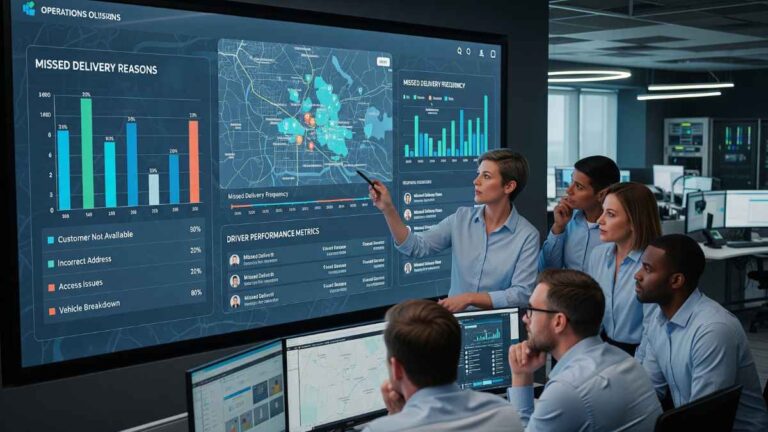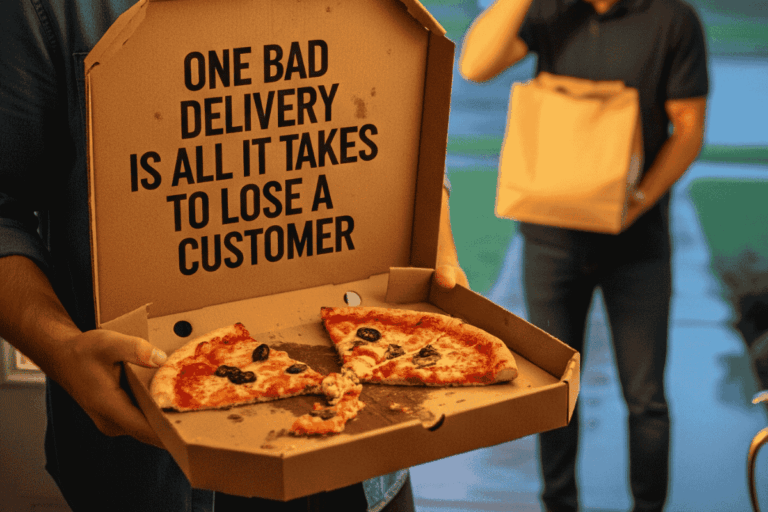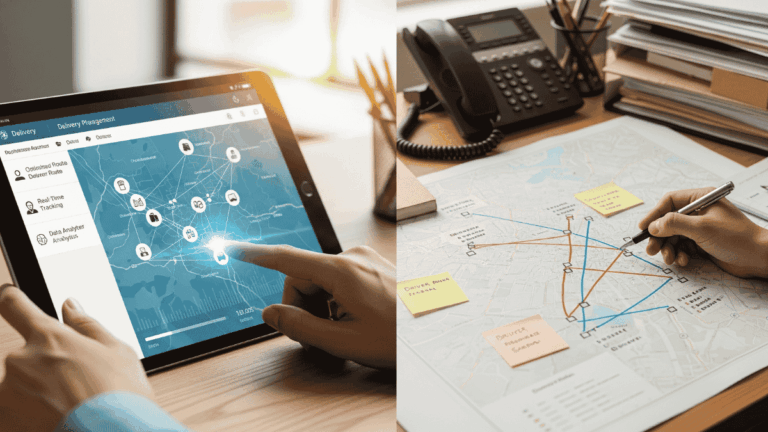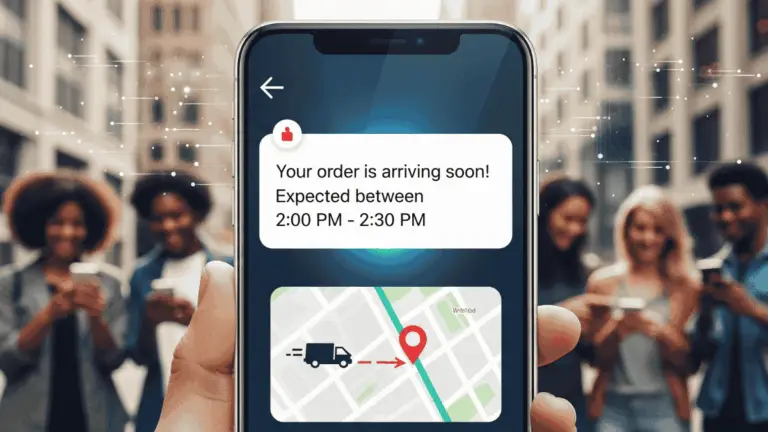Logistics companies and online stores should be focusing on reverse logistics.
Reverse logistics refers to the processes involved in managing the return of goods from consumers back to vendors. This emphasizes the importance of developing strategies to handle returns efficiently and improve the overall returns experience.
The reason for this can be highlighted by a Doddle survey. The company works with over 900 retailers and logistics providers worldwide to manage first and last-mile delivery.
It released a report which found that 75% of merchants say improving returns is important. We see that the need for effective returns is growing, especially as the e-commerce sector evolves.
In this article, we’ll explore a critical component of the logistics process that is reverse logistics, highlight trends, and provide insight into how you can master the process — and turn it into a competitive advantage.
What is reverse logistics
It is the process of returning goods back into the supply chain to be reused. The reverse supply chain forms an important part of the overall supply chain. It often involves the return of goods, for example damaged items.
How are industry players getting involved in returns?
Companies are increasingly recognizing that reverse logistics and efficient returns management are vital to maintaining customer satisfaction and operational success.
Here are some examples of companies working to conquer the returns. A common reverse logistics process involves the returns management phase, where customers return items for various reasons such as damage or dissatisfaction.
UPS
A clear example of this is UPS’s acquisition of the reverse logistics firm Happy Returns.
This Los Angeles-based company specializes in providing a seamless, no-box, no-label return experience for both merchants and customers.
With a network of over 10,000 box-free return locations across the US, Happy Returns has revolutionized the returns process by making it more accessible and customer-friendly.
UPS CEO Carol Tomé acknowledges the challenges that shoppers and retailers have historically faced with returns.
She emphasizes that “by integrating Happy Returns’ user-friendly digital platform and extensive drop-off network with UPS’s expansive small package system and nearly 5,200 UPS Store locations, box-free, label-free returns are now available at over 12,000 convenient locations across the US.”
This acquisition by UPS highlights the increasing significance of reverse logistics in today’s competitive market, as businesses focus on delivering more streamlined and convenient return processes to boost customer satisfaction and optimize their operational efficiency.
This acquisition highlights the importance of an efficient reverse logistics system in managing returns and enhancing customer satisfaction.
Harbor Locker
Harbor Locker provides clients with an on-demand locker network. The company launched North America’s first on-demand locker marketplace. Its ‘Harbor Connect’ app allows companies to create last-mile delivery, returns, and food delivery opportunities.
Managing delivery failure is crucial in ensuring that products are returned to the retailer or fulfillment center efficiently.
This illustrates companies in the market are thinking about ways to help customers work on returns.
DHL
DHL Express has an international returns portal for its UK small and medium-sized enterprises (SME) customers. This portal, part of DHL Express Commerce, lets small businesses set up a branded returns process on their website quickly.
It is customizable, allowing e-commerce brands to set their own returns policies and terms, making it easy for shoppers to initiate returns and generate printable labels.
Efficient packaging management is essential in ensuring that returned items are handled properly and sustainably.
Picture this: Imagine a small UK-based online clothing store struggling with managing returns. Customers often face difficulties initiating returns, leading to frustration and lost sales. With DHL Express’s new international returns portal, the store quickly creates a branded, customizable returns process on its website.
Now, customers can easily start returns and print labels directly from the store’s site. This streamlined process boosts customer satisfaction and loyalty, helping small businesses thrive in a competitive market.
Shoppers avoiding international purchases
A report by Asendia and ESW found one in four shoppers avoid buying from international retailers due to concerns around returns.
Effective inventory management is crucial in handling returns and ensuring that returned items are processed efficiently.
Asendia offers a range of international e-commerce and mail delivery services. The company services fashion, apparel, health and beauty, marketplaces, and food and supplements. Key destinations for e-tailers include Asia, Europe, the USA, and Canada.
Key findings from data collected from over 18,000 respondents across 18 countries reveal that customers have high and varied expectations for the post-purchase journey, especially when it comes to cross-border returns.
Trends in reverse logistics
Invesp released a report on the e-commerce return rate along with statistics and trends. It highlights that:
- 92% of consumers say they would shop again if returning products was easy.
- 79% of respondents wanted free return shipping.
- 67% of shoppers review the returns page before buying.
- 62% are more likely to shop online if they can return items in-store.
- 58% want a hassle-free, “no questions asked” return policy.
- 47% prefer an easy-to-print return label.
- Approximately 30% of all online purchases are returned compared to 8.89% in brick-and-mortar stores.
Optimizing reverse logistics processes through technology and analytics can significantly improve efficiency and reduce costs.
Top return option for the US
A report by logistics giant FedEx shows that no-label/no-box shipping is the return option of choice in the US. The company surveyed over 1,000 consumers and 500 US businesses.
To manage reverse logistics effectively, companies need to streamline their return processes and offer convenient return options.
The company surveyed over 1,000 consumers and 500 US businesses in December 2023.
Respondents agreed overall that no-box/no-label is more convenient, straightforward, easier, and less stressful than other return options.
How to improve returns management
A report by McKinsey & Company highlights that addressing returns challenges requires both concrete initiatives to manage the impact of returns and meaningful changes to the operating model.
“Most retailers have tried some strategies on return mitigation. For example, basic shopping tools such as consumer reviews and high-resolution images are typically associated with conversion improvement but have a side benefit of reducing return rates by helping the consumer select the right product,” reads the report.
The report adds that retailers with stricter returns policies prior to the COVID-19 pandemic have often loosened their restrictions during the pandemic to protect their top-line sales.
Understanding the different types of reverse logistics, such as returns management, remanufacturing, and product retirement, is crucial for effective returns management.
Here are some ways to improve returns management
Data and analytics
Some retailers have improved returns management by adjusting policies and streamlining processes. If you have detailed data and analytics, this can help you manage returns effectively. Integrating supply chain management with data and analytics can enhance visibility and efficiency in handling returns.
Tobin Moore, CEO of Optoro says: “With the right information combined with the use of predictive analytics and machine learning, retailers can quickly find the most profitable disposition channel for a return, avoid unnecessary shipping and redundant touches by optimizing the best path from the initiation of the return.
Optoro adds that the right analytical approach to returns from the outset helps to fend off depreciation, reduces the number of items that end up in landfills, and even boosts revenue by driving repurchases of goods.
Advanced shopping tools
Most companies we surveyed in McKinsey & Company’s report say they use basic tools like reviews, size guides, and high-res images, with some now testing tactics like pop-up messages to discourage returns when customers add multiple sizes to their cart.
Advanced shopping tools can help reduce returns caused by poor sales by providing customers with accurate product information.
“Some retailers have begun showing product photos or videos with models of different skin tones and body types to give shoppers a more realistic idea of how a product will fit them,” reads the report.
Offer multiple return options
Providing customers with various return methods, such as in-store returns, drop-off locations, or at-home pick-up services, enhances convenience and satisfaction.
What’s the bigger picture? Offering multiplier return options may reduce the perceived risk of shopping online and reduce cart abandonment.
Focus on communication
Keep customers informed throughout the return process with timely updates and tracking options. This transparency builds trust and loyalty.
Automation in the reverse logistics process
Sorting and scanning systems
Automated sorting and scanning systems help quickly identify, categorize, and route returned items to the appropriate department, such as restocking, refurbishment, or recycling. This speeds up the return process and reduces manual labor.
Real-time inventory management
Automated systems update inventory levels in real-time as returned items are processed. This ensures accurate stock levels and helps with faster restocking of resalable items.
Machine learning algorithms can also automatically decide whether an item should be restocked, refurbished, or recycled based on predefined criteria, reducing the need for human intervention.
Customer communication
Customers can receive automated real-time updates on the status of their returns through automated email or SMS notifications. This keeps them informed and reduces the need for customer service inquiries.
Chatbots can handle common return-related questions, guide customers through the return process, and even initiate return requests, improving customer service efficiency.
Return label and shipping
Instead of pre-printed labels, some companies are adopting QR codes that customers can scan at drop-off points to generate a return label on the spot. This reduces waste and streamlines the return process.
Customers can automatically generate return shipping labels online, making the return process faster and more convenient.
Real-word examples of reverse logistics
Here are examples of companies who are conquering the reverse logistics space.
Effective reverse logistics can extend the product life cycle through processes like reselling, reusing, and recycling.
Zappos
Zappos is known for its customer-centric return policy. The company offers a generous 365-day return window, allowing customers to return items within a year of purchase.
Returns are free, and the process is simple: customers can log into their account, print a prepaid return label, and ship the item back. This hassle-free returns process has been a key factor in Zappos’ strong customer loyalty.
Amazon
Amazon’s return process is streamlined and convenient, offering various options for returning items.
Customers can return products through the mail, by dropping them off at UPS locations, or at Amazon’s physical return locations, such as Amazon Fresh stores or Whole Foods.
In many cases, customers don’t need to repackage the item; they simply bring it to a drop-off point. Amazon’s extensive network of return locations and easy-to-follow process make it a leader in reverse logistics.
IKEA
IKEA offers a flexible and customer-friendly return policy. Customers can return products within 365 days with proof of purchase, whether purchased online or in-store. IKEA provides multiple return options, including:
- In-store returns.
- Online returns by mail.
- Pickup services for larger items.
Will paid returns become the norm?
Shipping platform Sendcloud conducted a survey that found 79% of fashion retailers charging for and paid returns are increasingly taking the stage in the fashion industry. Integrating returned items into the recycling or reuse chain can help minimize environmental impact and reduce waste.
The company recently researched the top 100 UK retailers.
More transparency needed
Sendcloud finds that there still needs to be more transparency regarding returns. “The lack of transparency extends to return costs, with 64% of the retailers who impose return fees failing to disclose the charges upfront.”
How are companies adapting as the era of free returns ends?
Rob van den Heuvel, CEO and Co-founder of Senddcloud says: “The era of free returns is past us, making way for conscious returns practices. Beyond rethinking the costs of returns, it is time for the entire industry to rethink returns. Replacing pre-printed labels with QR codes is one way to do so,’ says Rob van den Heuvel,” he says.
Parcel lockers and reverse logistics
Technology is changing the face of logistics. One innovation that is proving popular is parcel lockers. Here’s how this technology is helping with reverse logistics
Customer satisfaction and convenience
- Parcel lockers offer 24/7 access for returning items, allowing customers to drop off returns at their convenience.
- No need for face-to-face interactions, making the return process quicker and easier.
Improved efficiency
- Speeds up the return process by reducing delays associated with traditional return methods.
- Helps retailers manage returned inventory more efficiently by streamlining the collection process.
Cost reduction
- Reduces operational costs by minimizing the need for in-store staff to handle returns.
- Decreases the likelihood of return fraud by ensuring secure drop-off locations.
Reverse logistics market
Grand View Research reports the global reverse logistics market will grow at a compound annual growth rate of 9.4%. “The global expansion of e-commerce businesses and the increasing frequency of returns and replacements of products have propelled the demand for reverse logistics services.”
The report adds that another aspect contributing to the growth of the market is government regulation. Because the e-commerce sector has experienced growth, businesses have needed to ensure a good reverse logistics process.
The supply chain process involves managing the flow of products returned from customers back to retailers or manufacturers.
“The e-commerce service providers emphasize reverse logistics as certain customers prefer to initially analyze the ordered products physically and then decide whether to keep them. If the product is not worth buying, customers can return it with the help of reverse logistics. For instance, buyers can only test clothing after making a purchase decision, especially for online shopping.”
About the author
Sharl is a qualified journalist. He has over 10 years’ experience in the media industry, including positions as an editor of a magazine and Business Editor of a daily newspaper. Sharl also has experience in logistics specifically operations, where he worked with global food aid organisations distributing food into Africa. Sharl enjoys writing business stories and human interest pieces.











